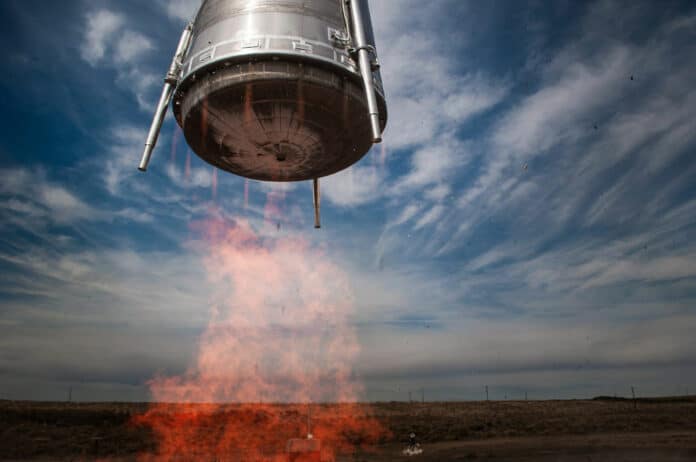Stoke Space has successfully conducted a vertical takeoff and vertical landing (VTVL) developmental test flight of its reusable second-stage rocket at its Moses Lake site in Washington.
The test, known as Hopper2, saw Stoke Space’s Hopper test vehicle lift off about 30 feet off the ground and safely return to the ground following 15 seconds of flight. The purpose of the test was to demonstrate the reliability of the rocket’s systems and design elements, which included its hydrogen/oxygen engine, coolant-based heat shield, and differential throttle thrust vector control system, as well as its avionics, software, and ground systems.
“We’ve also proven that our novel approach to robust and rapidly reusable space vehicles is technically sound, and we’ve obtained an incredible amount of data that will enable us to confidently evolve the vehicle design from a technology demonstrator to a reliable, reusable space vehicle,” the company said in a statement.
During the test campaign, Stoke Space tested several features of the rocket, including its differential throttle, which is used for attitude control of the vehicle but isn’t commonly used in the modern space industry. Additionally, they tested its regeneratively cooled heat shield, which uses pressurized coolant passing through metal pores in the exterior of the rocket to cool its surface during re-entry.
Although this vehicle didn’t directly experience the heat from hypersonic atmospheric re-entry, it successfully operated at 100% of the anticipated heat load in a simulated environment.
With its innovative second-stage design, the Stoke team is attempting to do something that has never been done before: design and build a rocket that is 100% reusable with a 24-hour turnaround. To reach that goal, the team plans to continue moving through its development program by increasing focus on its reusable first stage.
